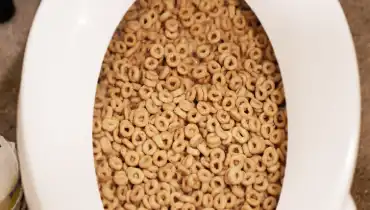Are You Capable to Flush Food in the Toilet?
Are You Capable to Flush Food in the Toilet?
Blog Article
We have stumbled on this post on Is it safe to flush food (especially rice) down the toilet? directly below on the net and felt it made good sense to talk about it with you here.

Intro
Many individuals are usually faced with the predicament of what to do with food waste, specifically when it comes to leftovers or scraps. One common concern that arises is whether it's alright to flush food down the commode. In this post, we'll delve into the reasons individuals might think about flushing food, the effects of doing so, and alternate techniques for appropriate disposal.
Reasons people might think about flushing food
Lack of awareness
Some people might not understand the potential injury triggered by purging food down the commode. They might mistakenly think that it's a harmless method.
Ease
Purging food down the toilet might feel like a fast and very easy solution to throwing away unwanted scraps, specifically when there's no nearby trash bin available.
Laziness
In many cases, people might merely pick to flush food out of large negligence, without considering the effects of their activities.
Consequences of flushing food down the toilet
Environmental impact
Food waste that winds up in rivers can add to air pollution and damage aquatic communities. Furthermore, the water used to flush food can strain water resources.
Pipes problems
Flushing food can lead to clogged up pipes and drains pipes, triggering expensive plumbing repair work and troubles.
Kinds of food that ought to not be flushed
Coarse foods
Foods with coarse structures such as celery or corn husks can get tangled in pipes and create blockages.
Starchy foods
Starchy foods like pasta and rice can absorb water and swell, bring about blockages in pipelines.
Oils and fats
Greasy foods like bacon or cooking oils ought to never be flushed down the commode as they can strengthen and cause clogs.
Appropriate disposal methods for food waste
Using a waste disposal unit
For homes furnished with waste disposal unit, food scraps can be ground up and purged with the plumbing system. Nevertheless, not all foods appropriate for disposal in this manner.
Recycling
Specific food product packaging products can be recycled, decreasing waste and lessening environmental effect.
Composting
Composting is an environmentally friendly means to get rid of food waste. Organic products can be composted and made use of to enhance dirt for horticulture.
The relevance of correct waste management
Decreasing ecological damage
Proper waste management practices, such as composting and recycling, aid decrease contamination and preserve natural deposits for future generations.
Securing plumbing systems
By staying clear of the method of flushing food down the commode, house owners can prevent expensive plumbing repairs and keep the integrity of their pipes systems.
Conclusion
Finally, while it may be tempting to flush food down the bathroom for comfort, it's important to understand the possible effects of this activity. By embracing appropriate waste administration practices and throwing away food waste properly, individuals can add to healthier pipes systems and a cleaner atmosphere for all.
FLUSH FOOD DOWN THE TOILET?
FLUSHING FOOD CAN CAUSE BLOCKED DRAINS IN YOUR HOME
All of the plumbing fixtures in your home are connected to the same sewer pipe outside of your home. This outdoor sewer pipe is responsible for transporting all the wastewater from your home to the Council sewer mains. Even small pieces of food that go down the kitchen sink can cause problems for your sewer. It should therefore be obvious that flushing larger bits of food, such as meat, risks a clog in either the toilet itself or the sewer pipes. Flushing greasy food is even more problematic because oil coagulates when it cools, coating the interior lining of your pipes.
THE TOILET IS NOT A BIN
Food isn’t the only thing that people shouldn’t be flushing down the toilet. People use the toilet to dispose of all kinds of things such as tampons, makeup wipes, dental floss, kitty litter and even underwear. Water goes to great lengths to educate residents about the high costs and stress placed on wastewater treatment systems simply from people flushing the wrong stuff down the toilet. It costs taxpayers millions of dollars each year, and homeowners thousands in blocked drain repairs.
FLUSHING FOOD IS A WASTE OF WATER
Flushing food is a waste of our most precious resource - water. In June this year Level 1 water restrictions were introduced to protect water supply from drought conditions. Much of New South Wales continues to be affected by prolonged drought with recent figures revealing up to 97 per cent of the state remains in drought. Depending on whether you have a single or dual flush toilet, every single flush uses between five and 11 litres of water. In the current climate this is a huge amount of water to be wasting on flushing food that should be placed in the bin (or better yet, the compost).
https://www.jabplumbingsolutions.com.au/blog/can-you-flush-food-down-the-toilet

Do you like reading about Is it safe to flush food (especially rice) down the toilet?? Try leaving a short review further down. We would be glad to find out your opinion about this review. We hope that you visit us again later on. For those who appreciated our blog post if you please make sure you remember to share it. Thank you so much for your time invested reading it.
Schedule Now Report this page